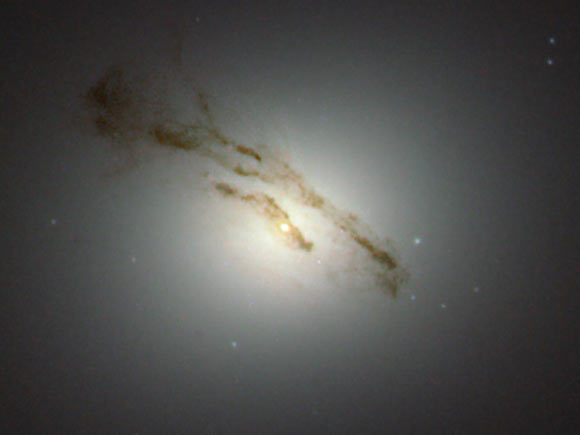Astronomers using the NASA/ESA Hubble Space Telescope have photographed an unusual galaxy called Messier 84.

This image of Messier 84 does not show the whole galaxy but only its very interesting center, and is likely to be the best image of the region ever captured. Image credit: ESA / Hubble / NASA.
Messier 84, also known as NGC 4374 or M84, is located in the constellation Virgo, approximately 55 million light-years away.
It was discovered on 18 March 1781 by the French astronomer Charles Messier.
The galaxy is one of the brighter members of the Virgo Cluster – a galactic cluster which consists of more than 1,000 galaxies, and is situated in the cluster’s heavily populated inner core.
Some scientists believe Messier 84 is a face-on lenticular galaxy of type S0, while others regard it as an elliptical galaxy of type E1.
In either case, there is no obvious spiral structure, and little dust or gas content.
Previous observations with the Imaging Spectrograph aboard Hubble revealed a supermassive black hole in the center of this galaxy.
Astronomers found it by mapping the motion of the gas and the stars which are caught in its grip.
Next to its interesting center, Messier 84 is also known for its supernovae.
The supernova 1957B was discovered by the Italian astronomer G. Romano in 1957 at 13th magnitude.
The supernova 1980I was discovered on June 13, 1980 and reached magnitude 14.
The supernova 1991bg appeared in the galaxy on December 3, 1991 and reached magnitude 14.







